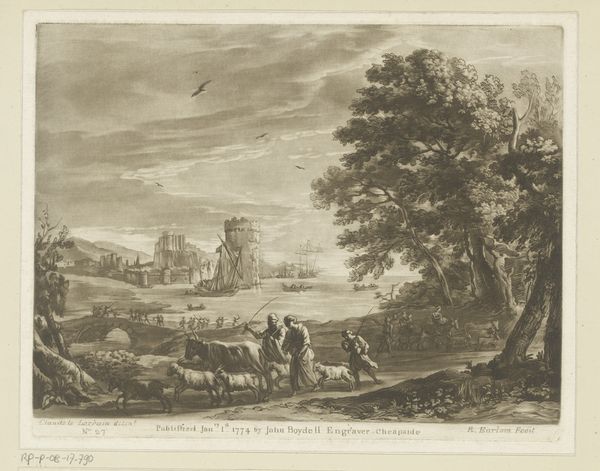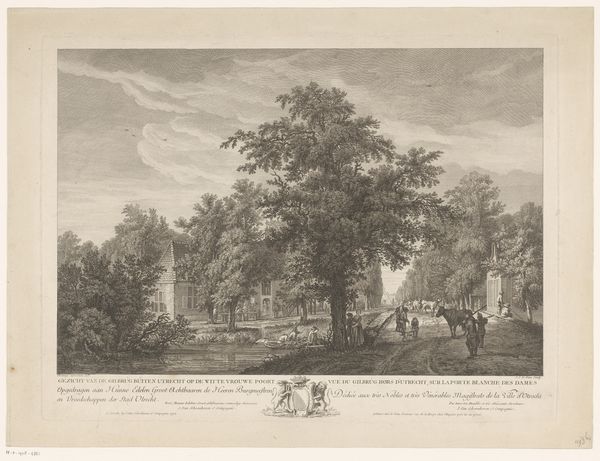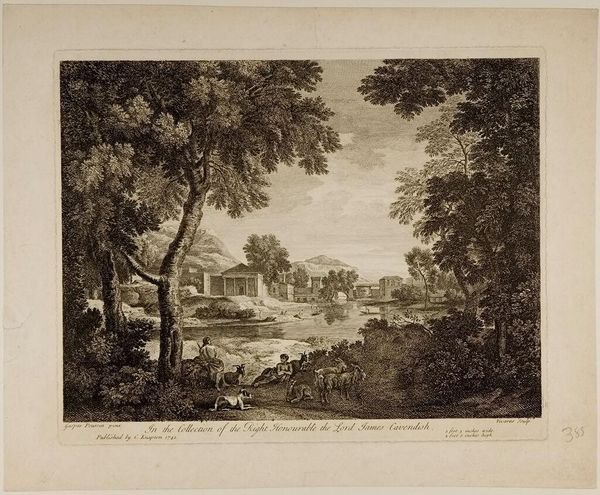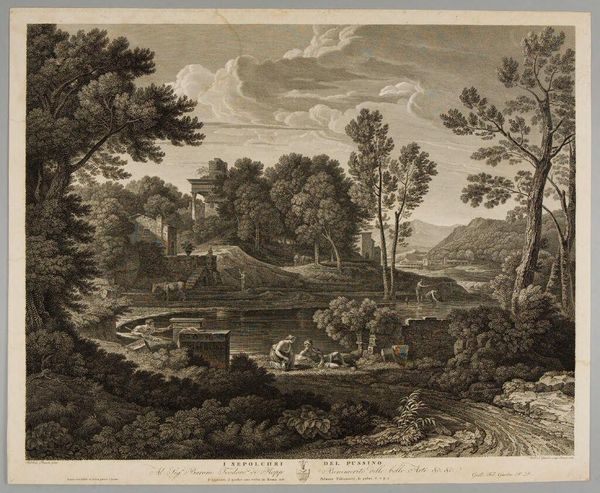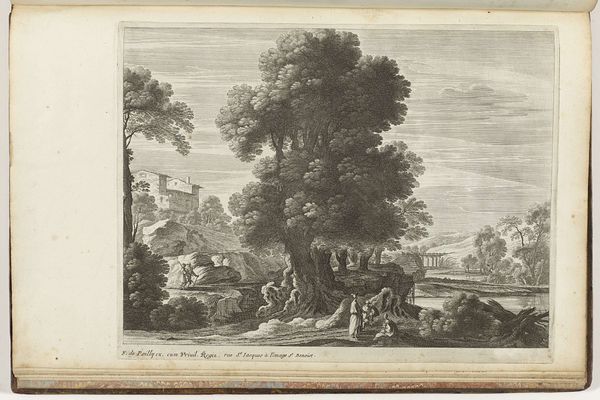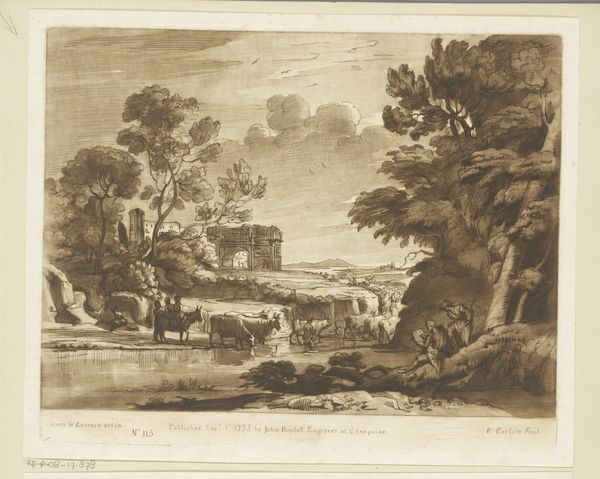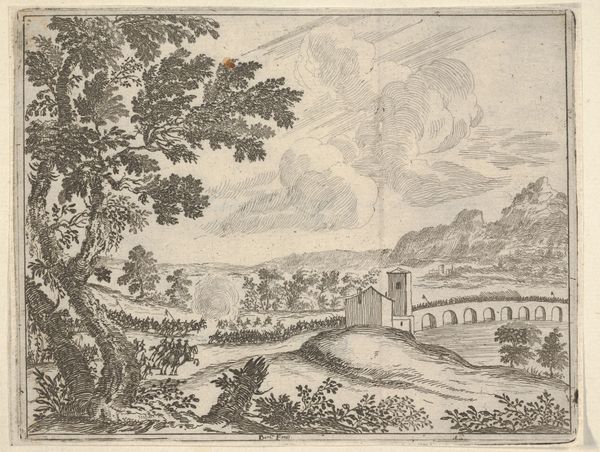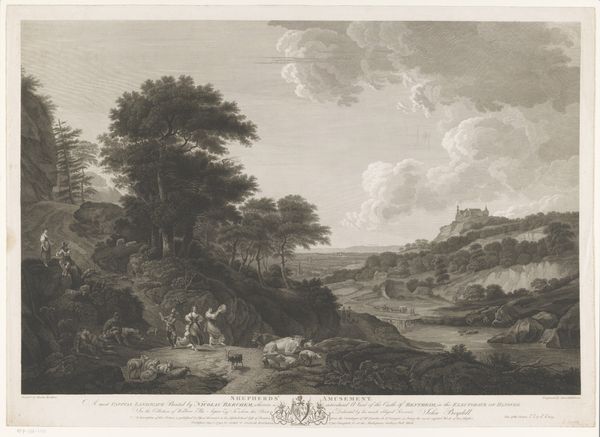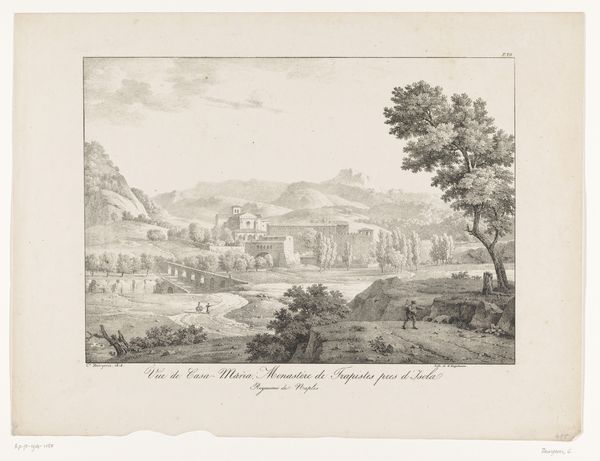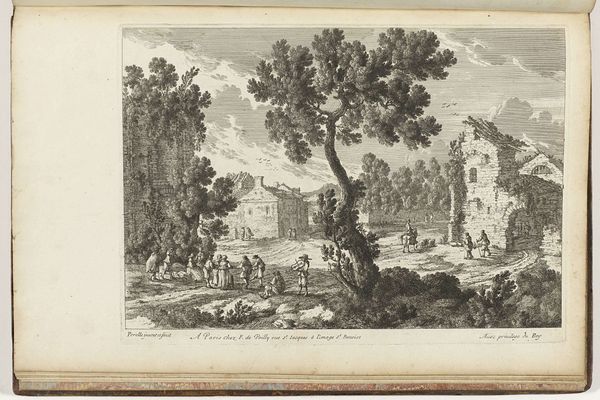
engraving
#
baroque
#
old engraving style
#
landscape
#
pen work
#
cityscape
#
history-painting
#
engraving
Dimensions: height 573 mm, width 757 mm
Copyright: Rijks Museum: Open Domain
Etienne Baudet created this print, "The Funeral of Phocion," sometime before 1711. It’s made using a printmaking process called etching, where lines are incised into a metal plate, which is then inked and pressed onto paper. The dense, parallel lines and cross-hatching that define the composition, would have required significant labor. Baudet would have coated a copper plate with wax, then carefully drawn into it with a needle, exposing the metal. The plate was then immersed in acid, which bit into the exposed lines. This demanding process was a key means of reproducing images at the time. The very concept of making multiple, identical images is linked to broader social and economic shifts of the era, including emerging capitalism and mass production. Although this print depicts a scene from ancient history, it's also very much a product of its own time. Consider the skilled labor involved in its making, and how that connects to larger economic systems of the 17th and 18th centuries.
Comments
No comments
Be the first to comment and join the conversation on the ultimate creative platform.

